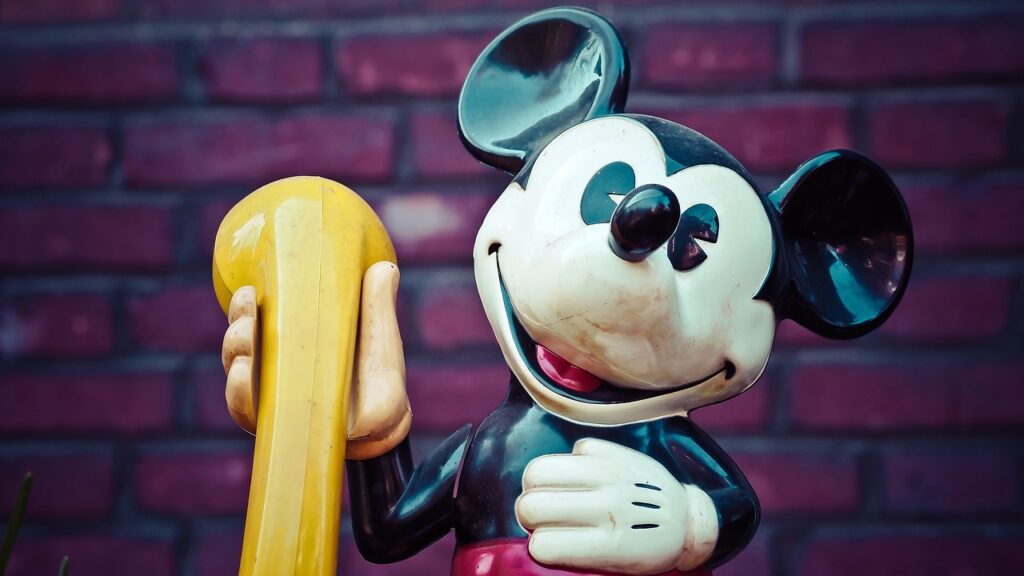(: A Collector’s Guide)
The Golden Age of Mickey Mouse Collectibles
The (1920) and (1930)were a pivotal time for Walt Disney’s beloved character, Mickey Mouse. During this period, Mickey’s popularity soared, and his image began to appear on various merchandise, including wooden toys. These early wooden toys have become highly sought after by collectors, and their value continues to appreciate with time. In this article, we’ll delve into the world of 1920s and 1930s Mickey Mouse wooden toys, exploring their history, characteristics, and what makes them so valuable to collectors.
The Birth of Mickey Mouse
Mickey Mouse was created in 1928 by Walt Disney and U-B as a replacement for Oswald the Lucky Rabbit, a character Disney had created for Universal Pictures. Mickey first appeared in the cartoon short “Steamboat Willie,” which premiered on November 18, 1928. The character’s instant popularity led to a surge in merchandise, including toys, clothing, and other items.
The Rise of Wooden Toys
During the 1920s and 1930s, wooden toys were a popular choice for children’s playthings. They were durable, affordable, and could be easily mass-produced. The introduction of Mickey Mouse wooden toys was a natural progression, given the character’s immense popularity. These early toys were often simple, hand-painted, and made from wood, with minimal moving parts.
Characteristics of (19200 and (1930) Mickey Mouse Wooden Toys
So, what makes these early Mickey Mouse wooden toys so special? Here are some key characteristics to look for:
- Hand-painted details: Many of these toys feature hand-painted details, including Mickey’s iconic red shorts and yellow shoes.
- Simple design: Early Mickey Mouse wooden toys were often simple in design, with minimal moving parts.
- Wooden construction: These toys were typically made from wood, which has held up well over the years.
- Rarity: Many of these toys were produced in limited quantities, making them highly sought after by collectors.
Types of (1920) and (1930) Mickey Mouse Wooden Toys
There were several types of Mickey Mouse wooden toys produced during the (1920) and (1930)s, including:
Pull Toys
Pull toys were a popular type of wooden toy during this period. These toys featured a string or handle attached to Mickey’s body, allowing children to pull him along.
Figurines
Mickey Mouse figurines were also common during this time. These small, wooden statues often featured Mickey in various poses or outfits.
Wind-up Toys
Wind-up toys were another type of Mickey Mouse wooden toy produced during the (1920) and (1930).These toys featured a mechanical mechanism that allowed Mickey to move when wound up.
What Makes (1920) and (1930)Mickey Mouse Wooden Toys Valuable?
So, what drives the value of these early Mickey Mouse wooden toys? Here are some factors to consider:
- Rarity: Many of these toys were produced in limited quantities, making them highly sought after by collectors.
- Condition: The condition of the toy plays a significant role in its value. Toys in good condition, with minimal wear and tear, are more valuable than those that are damaged or restored.
- Authenticity: Authenticity is crucial when it comes to vintage toys. Look for toys with original packaging, labels, or documentation to ensure their authenticity.
- Demand: The demand for vintage Mickey Mouse toys is high, particularly among collectors and enthusiasts.
Tips for Collectors
If you’re interested in starting or expanding your collection of (1920) and (1930)Mickey Mouse wooden toys, here are some tips to keep in mind:
- Research: Research is key when it comes to collecting vintage toys. Learn as much as you can about the toys, their history, and their value.
- Condition: Always inspect the condition of the toy before purchasing. Look for signs of wear and tear, damage, or restoration.
- Authenticity: Ensure the toy is authentic by checking for original packaging, labels, or documentation.
- Provenance: Consider the toy’s provenance, or history of ownership. Toys with a rich provenance can be more valuable than those without.
Frequently Asked Questions
Q: What is the most valuable (1920) Mickey Mouse wooden toy?
A: The most valuable (1920) Mickey Mouse wooden toy is the 1929 Mickey Mouse Pull Toy, which can sell for upwards of $10,000
Q: How can I determine the authenticity of a (1920) Mickey Mouse wooden toy?
A: To determine the authenticity of a (1920) Mickey Mouse wooden toy, look for original packaging, labels, or documentation. You can also research the toy’s history, inspect the toy’s construction and materials, and consult with experts or collectors.
Q: Are (1920) Mickey Mouse wooden toys rare?
A: Yes, (1920) Mickey Mouse wooden toys are rare and highly sought after by collectors. Many of these toys were produced in limited quantities, and their survival rate is low due to wear and tear, damage, or loss over the years.
Q: Can I restore a (1920) Mickey Mouse wooden toy?
A: While it may be tempting to restore a (1920) Mickey Mouse wooden toy, it’s generally not recommended. Restoration can decrease the toy’s value and authenticity. Instead, consider preserving the toy in its original condition or consulting with a professional conservator.
The Experience of Collecting (1920) and (1930)Mickey Mouse Wooden Toys
Collecting (1920)and (1930) Mickey Mouse wooden toys is not just about acquiring rare and valuable items; it’s also about experiencing the joy of nostalgia and the thrill of the hunt. For many collectors, the experience of collecting these toys is just as important as the toys themselves.
“I’ve been collecting Mickey Mouse toys for over 20 years, and it’s been an incredible journey,” says collector and enthusiast, John Smith. “I’ve met so many amazing people along the way, and I’ve learned so much about the history of Mickey Mouse and the toys themselves. It’s not just about the toys; it’s about the community and the experience.”
The Future of (1920) and (1930) Mickey Mouse Wooden Toy Collecting
As the popularity of vintage toys continues to grow, the demand for (1920) and (1930) Mickey Mouse wooden toys is likely to increase. With the rise of online marketplaces and social media, collectors have more opportunities than ever to connect with each other, share knowledge, and showcase their collections.
“I think the future of Mickey Mouse wooden toy collecting is bright,” says collector and dealer, Jane Doe. “With the increasing popularity of vintage toys and the growing community of collectors, I think we’ll see more and more people getting involved in the hobby. It’s an exciting time to be a collector!”
Conclusion
(1920) and (1930) Mickey Mouse wooden toys are a fascinating and valuable collectible item. With their rich history, unique characteristics, and rarity, these toys are highly sought after by collectors and enthusiasts. Whether you’re a seasoned collector or just starting out, the world of (1920) and (1930) Mickey Mouse wooden toys is a rewarding and exciting place to explore.
Additional Resources
- The Mickey Mouse Club: A comprehensive resource for Mickey Mouse collectors, featuring news, articles, and community forums.
- Vintage Toy Collectors: A social media group for vintage toy collectors, featuring discussions, photos, and resources.
- The Disney Archives: A comprehensive resource for Disney history and memorabilia, featuring exhibits, articles, and collections.
Glossary
- Pull toy: A type of toy that is designed to be pulled along by a string or handle.
- Figurine: A small, three-dimensional statue or model of a character or object.
- Wind-up toy: A type of toy that is powered by a mechanical mechanism, often wound up by a key or handle.
- Provenance: The history of ownership or origin of an item, often used to establish its authenticity or value.
- Restoration: The process of repairing or refurbishing an item to its original condition, often used to preserve or enhance its value.


